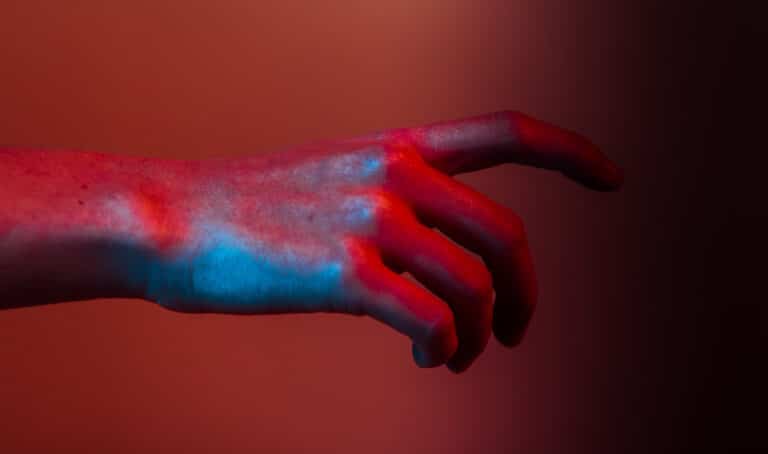Reports suggest the extinction of long-distance relationships post-pandemic

Let’s admit it, navigating love lives during a global pandemic isn’t easy. As singletons freed up storage space to experiment with various dating apps, couples scrambled to maintain their socially-distanced relationships—relying on virtual dates until “this too shall pass.” But what if these efforts were just a temporary sacrifice of physical contact no one wants to experience again? More so, what if we shift into a post-pandemic era where long-distance relationships go extinct and we let Tinder’s geolocation feature dictate our love lives instead?
The rise of slow dating and turbo relationships
Over the pandemic, slow dating and turbo relationships have undoubtedly become the dalgona coffee and sourdough bread of the dating industry. As potential couples took their own sweet time to get to know each other and create a deep connection before taking things to the next level, others were quick to ‘turbocharge’ their relationships and move in together quickly than they originally intended to.
These two contrasting trends have essentially redefined dating over the pandemic—with a collective focus on building meaningful relationships with intimacy, be it digital or real-time. Backed with a new report by eharmony and Relate, which found over a third of newly-minted couples believe in the fact that “the past two months feel equivalent to two years of commitment,” these trends have been proven to make couples feel more committed to each other and believe in long-term relationships.
“It’s been a really positive experience because they’ve reached milestones like getting to know the other person’s interests and developing their sexual relationship to quite a sophisticated level,” explained Peter Saddington, a counsellor working for Relate in an interview with Cosmopolitan. “They’ve reached the stage where they talk endlessly to each other about their family and past experiences.”
While the pandemic-accelerated popularity of turbocharged relationships leaves no hopes for long-distance ones, what is the foreseeable future of slow dating? How will this digital trend translate in a post-pandemic era?
The impact of 2020’s touch deprivation
While slow dating seems to be the perfect tool to foster digital intimacy, the impact of 2020’s touch deprivation is slowly showing up on dating apps as users increasingly seek out the “most innocent types of physical contact.”
In a report by Tinder, the platform highlights a spike in users leveraging their bios to seek out affection like hand-holding, cuddling or caressing. Use of the word ‘cuddle’ grew by 23 per cent while ‘hand holding’ is up by 22 per cent. After months of touch deprivation, it so seems that users have come to greatly appreciate these gestures of affection. “Even when meet-ups become common, little physical gestures will play a more important role in people’s dating lives,” the report concluded.
Along with small touches having a big impact on the post-pandemic dating scene, the platform also reports a rise in mentions of physical activities on first dates rather than icebreakers. The report states a 3 times increase in mentions of ‘rollerskating’ along with requests for date activities from fort building to snowball fights in bios.
“When it comes to meet-ups, daters will choose more creative, intimate yet casual first date activities than in the past,” the report read. “This trend towards activity-based first dates that skip the small talk will shape the next decade of dating. Daters will pick more interesting, unique first date activities that help them really get to know each other.”
This begs the question: even though there are studies which suggests that long-distance relationships “can have just as much intimacy, high-quality communication and satisfaction as geographically close relationships,” how much of this concept has held up over the past year and what seems to be the way forward as we increasingly embrace a post-pandemic era?
The potential kiss goodbye
For many dating app users, 2020 came with a coronavirus-prompted move. While some headed to new cities, others moved back in with their families. According to Pew Research Center, 52 per cent of young adults were living with a parent in July 2020, the highest rate in decades.
As a result, mentions of ‘moving’ in bios were up 28 per cent on Tinder with the app’s geolocation feature becoming highly relevant due to the pandemic moving boom. “Soon after people moved, they came to Tinder to meet people in their new city,” the report outlined.
Making up for 2020’s isolation and touch deprivation coupled with viral terms like ‘apocalypsing’ (treating every relationship like it’s your last post-pandemic) and ‘maskerading’ (fronting that you care about COVID-19 safety precautions for optics or to impress your crush), one fact stands clear: there won’t be a much-anticipated surge in long-distance relationships post-pandemic.
Instead, we would embrace an authentic dating scene—one where boundaries are more transparent and digital activities become part of the new normal as we seek out others around the corner, no matter where we live.




